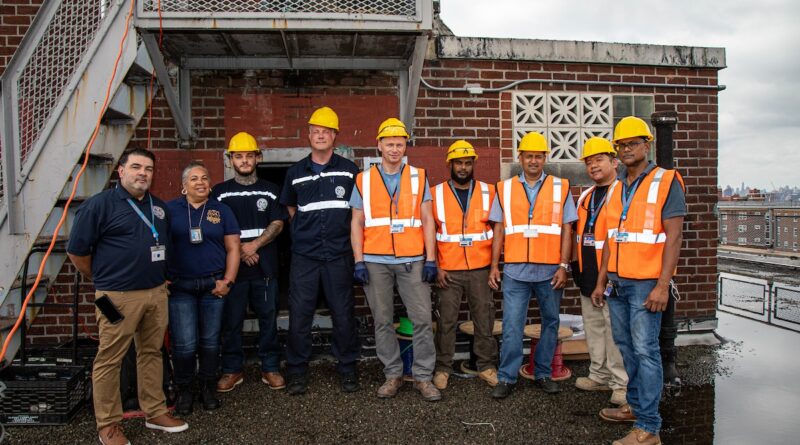NYCHA Begins Installing Voltage Technology for Improved Elevator Service
NYCHA is taking action to help prevent elevator outages caused by low voltage in a building.
This summer, the Bronx’s Jackson Houses became one of the first developments to receive installations of automatic voltage regulators (AVR) for its elevator operations. By automatically boosting voltage to acceptable operating levels, the new equipment allows elevators to continue functioning during “brownouts,” incidents where utility voltage is reduced. Brownouts are more common during the summer, when electrical demand is at its peak and utility companies may decrease voltage to conserve energy and prevent damage to the electrical grid.
When such reductions occur, a building’s elevator service could be interrupted. To lessen potential impacts on elevator service to residents, NYCHA’s Elevator Services and Repair Department (ESRD), in collaboration with the Technical Resources Department, are deploying AVR units, which automatically sense any decreased voltage and then boost voltage to provide a constant, reliable power supply.
“We decided to look for an alternative way to reduce some of these no-service conditions,” said Richard Solivan, ESRD Senior Director, in discussing what prompted his team to research the use of AVRs.
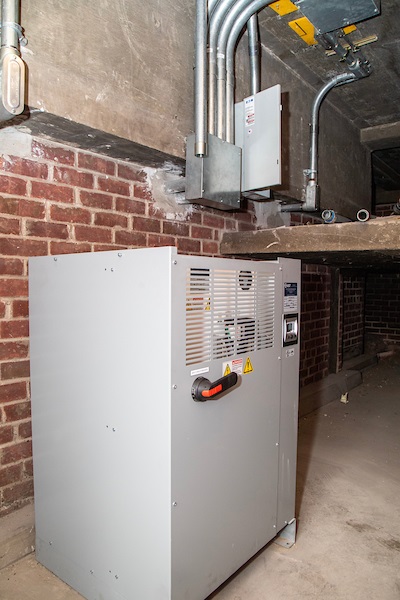
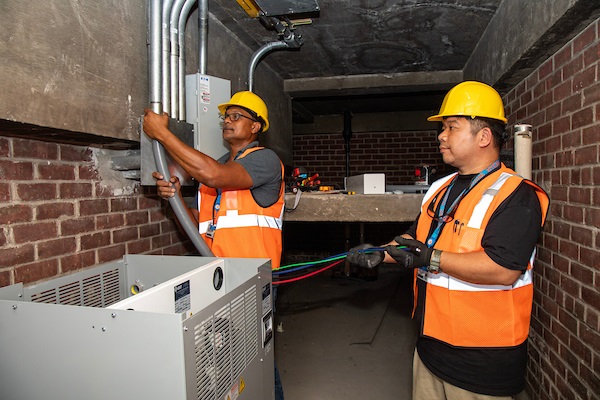

Crews install automatic voltage regulator (AVR) equipment at Jackson Houses.
NYCHA is launching the AVR projects at buildings where the highest number of low voltage-related service disruptions have occurred, prioritizing installations at developments with high populations of seniors or those with single-car elevator service, according to Keith Grossman, Executive Vice President of Operations Support Services. The first AVR equipment was installed at Brown Houses in Brooklyn in July. NYCHA is slated to install several AVRs as part of the first phase, and hopes to complete more than 70 AVR projects across the Authority over the next few years.
Mr. Solivan called the AVR solution “a huge component” for ensuring continual elevator operations and addressing possible safety issues for vulnerable populations such as seniors and people with disabilities or mobility impairments.
“This promotes safety as well,” he stated.
As part of efforts to improve services for residents, ESRD seeks to implement new elevator technologies and innovations, including the AVR units, said Marco Acevedo, ESRD Deputy Director.
“We’re looking to the future of elevators and how we can better provide service, and this is one of those pieces of equipment that is kind of futuristic in planning and maintaining continual elevator service,” Mr. Acevedo explained.
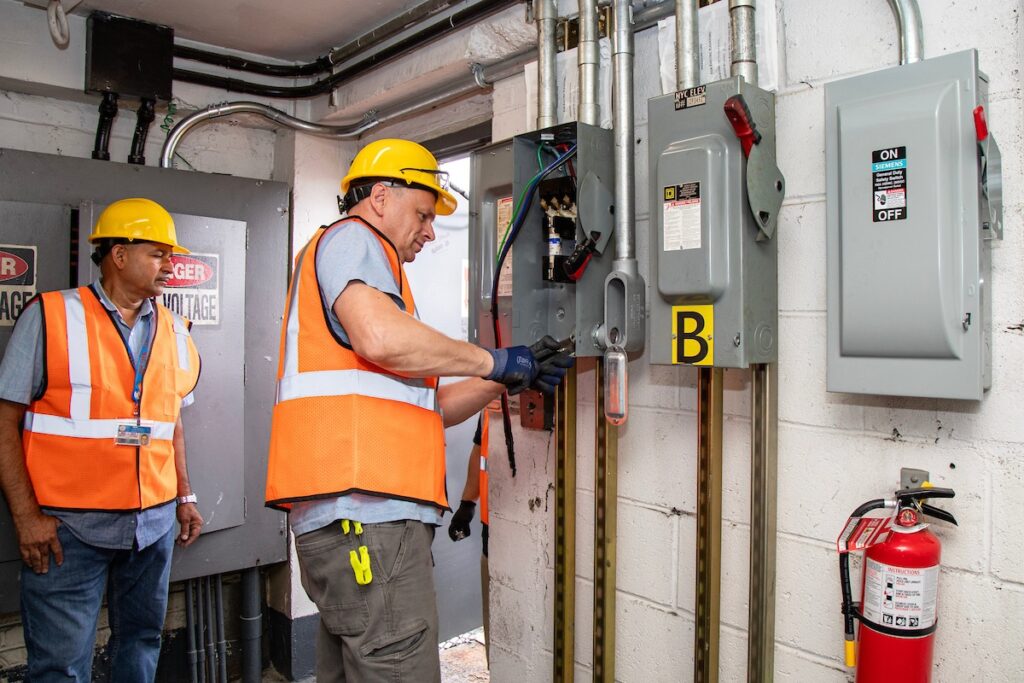
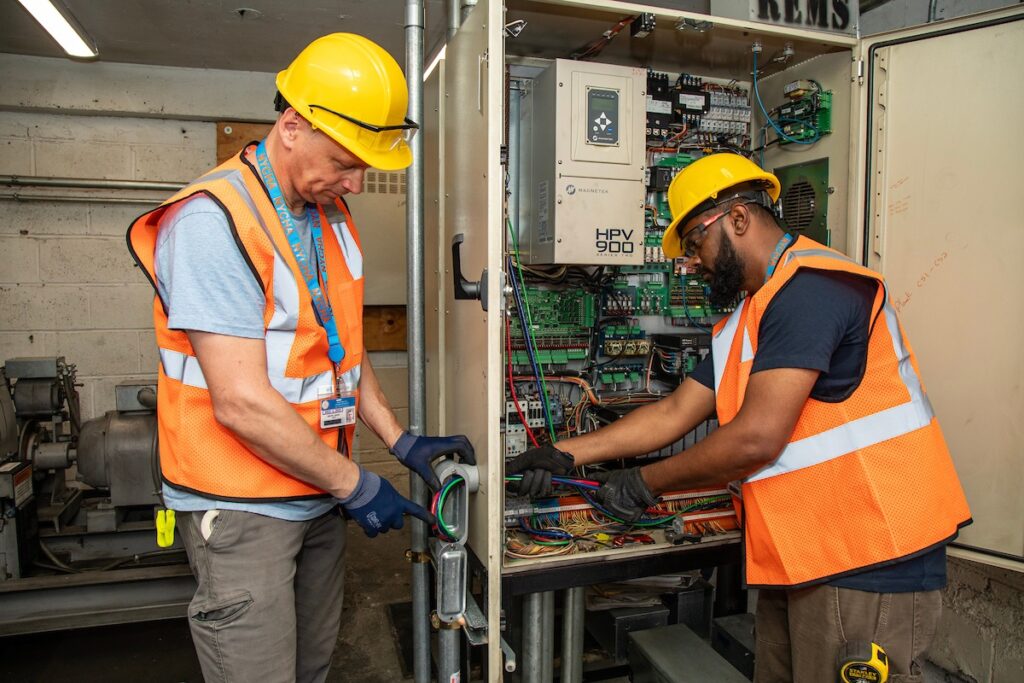
Installations of AVRs for elevators are being prioritized at buildings with the highest number of low voltage-related service disruptions.
The elevator resiliency projects are funded through community development block grants related to disaster recovery from Hurricane Ida, as well as NYCHA operational revenue.
ESRD staff are managing the installations in collaboration with Technical Resources Department employees, who assist with planning, survey the job sites and electrical needs, perform electrical wiring, and help test the new AVR unit before the elevator is returned to service. Prior to installation at a development, ESRD works with property managers to notify residents of the scheduled work and posts notices throughout the building days in advance.
“This is something that’s needed and I think it’s going to save a lot going down the road,” Technical Resources Director Joe Militano said of the AVR projects.
Supervisor Elevator Mechanic Ronald Hall, who has repaired elevators for 21 years, agreed. He is gratified to assist with efforts to help ensure residents are no longer affected by elevator disruptions due to low voltage circumstances.
“Knowing that we are installing these AVRs, so that when there’s a power reduction the unit can help get someone to a doctor appointment or upstairs to their apartment, it’s a really good feeling,” Mr. Hall said. “It makes you feel like you helped somebody.”

